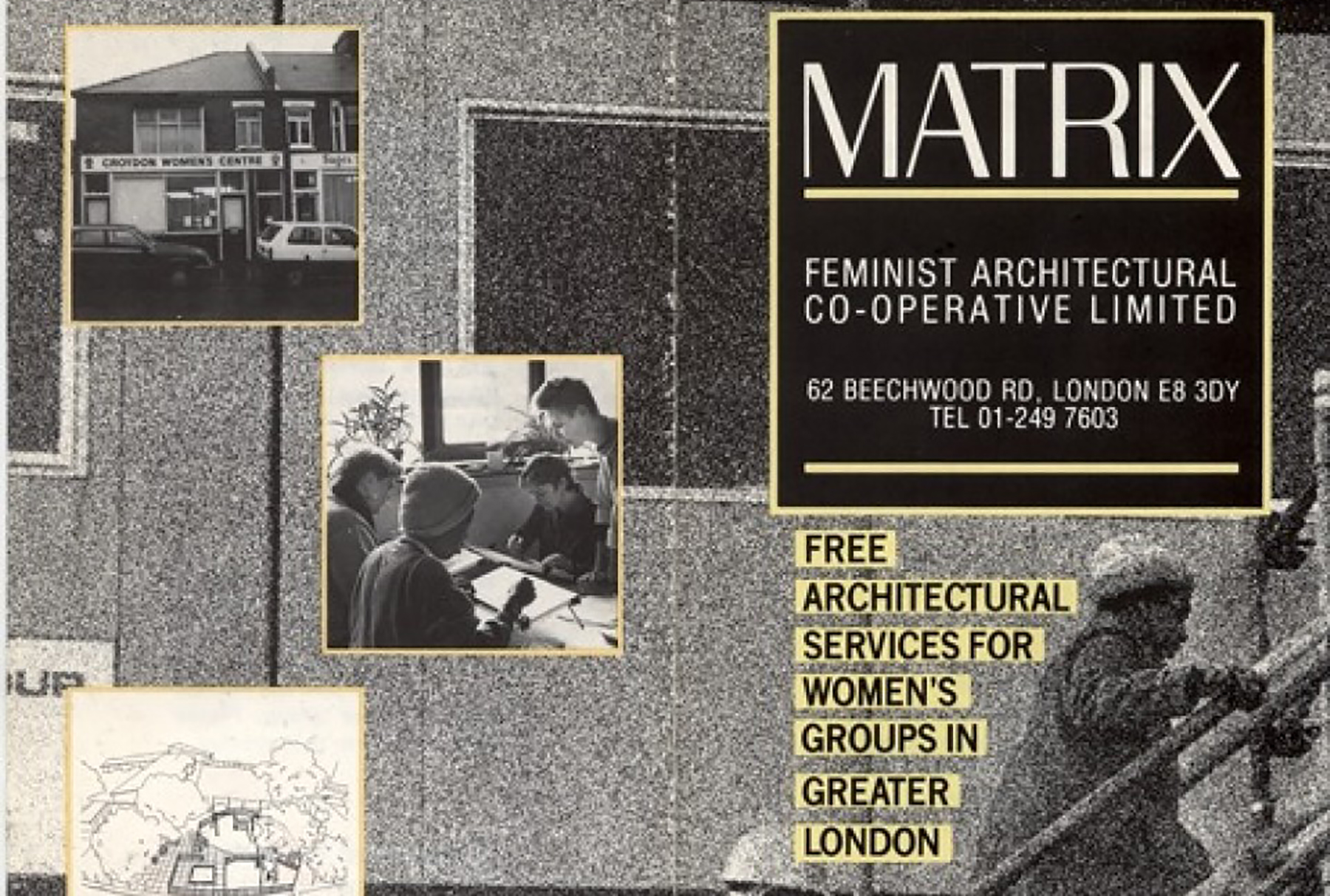Matrix Feminist Design Collective
The pioneering contribution of the Matrix Co-operative to feminist and socially-engaged architecture is only now being recognised for its historical significance and contemporary influence. The members of Matrix - Fran Bradshaw, Sue Francis, Barbara McFarlane and Anne Thorne - met and completed their undergraduate degrees in architecture at Newcastle University 1975-1979. The group have been central exemplars for activists campaigning for equality in architecture, building and the built environment (such as Hi-Vis and Part W in the UK; Making Difference at ETH, Switzerland; and Parlour in Australia).
In the 1980s and 90s, Matrix was one of only a handful of practices internationally to directly engage with feminism and architecture. It was a pioneering and enduring umbrella organisation of members tackling questions of women and the built environment through exhibitions, symposia, publications, education, a technical aid centre and design practice.
Matrix’s book Making Space: Women and the Manmade Environment provided a pioneering analysis of the exclusion of women from the built fabric of the city and the processes of design and building, and the group further disseminated their ideas through publications, TV, workshops, symposia, training and pedagogy. A close collaboration with construction was striking, with many members trained in building, working with women builders, alongside a distinctive involvement in education. The resulting critique of conventional processes of professional practice which reproduced patterns of exclusion, and new ways of organising their practice, have been echoed more recently by Assemble and others.
The group remain exemplary for working as a women-only co-operative where equal opportunities were central to the organisation – including childcare provision, non-hierarchical division of labour, and training on race, disability and sexual orientation. Their development of participatory processes, consultation, and accessible forms of architectural representation enabled clients to engage deeply with the design process, empowering clients.
The influential and substantial body of built work procured through these processes is testament to their importance and longevity. Karen Burns wrote in Architecture and Feminisms (2017) that Matrix’s Jagonari Educational Resource Centre is the ‘key historical example for feminist practice in the community/advocacy model’, and Doina Peterescu’s seminal feminist anthology Altering Practices (2007) cites Matrix’s work as the foundation for an exploration of ‘feminist politics and practices of space’.
Following the disbanding of Matrix, its former members took these principles into new architectural practices, in pedagogy, in academic research, in activism, and the work continues to inspire and inform new generations of architects. In the current climate – where gender in architecture has now become a decisive matter of concern, and where new forms of socially-engaged, politically-aware collective practice are once again flourishing – this seems absolutely the right moment to celebrate the group’s work, influence, and purchase. It signals how the profession can make a distinctive and positive contribution not just through built work but through engaged social and ethical practices.
